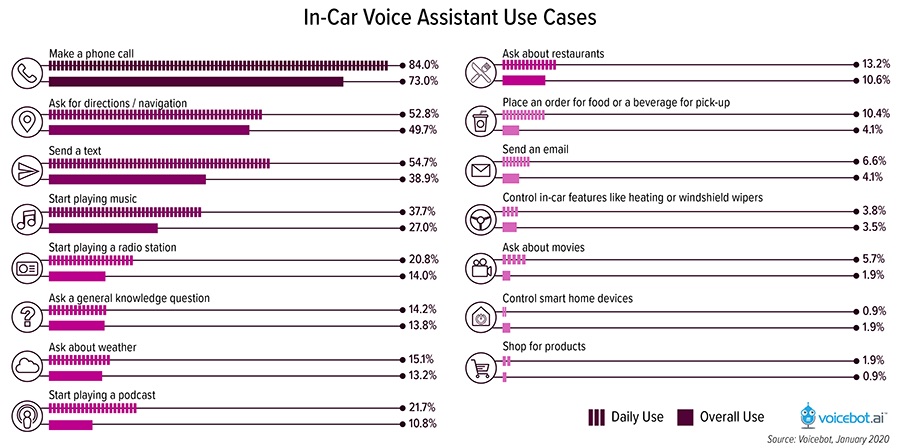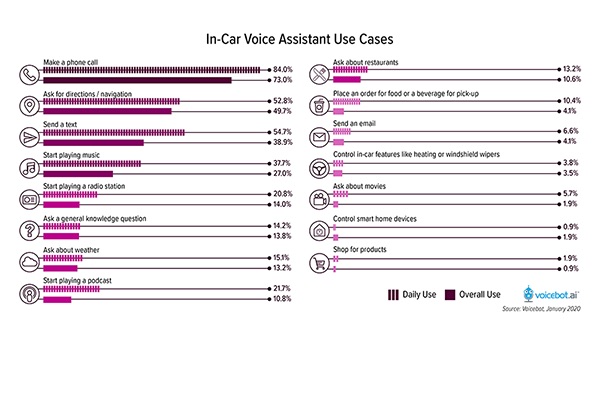In-Car Voice Assistant Users Show Different Patterns Than on Smart Speakers with Making a Phone Call the Top Request
You may hear that voice assistant use depends on context, but you rarely see data that backs up those statements. The In-car Voice Assistant Consumer Adoption Report 2020 breaks down 15 consumer use cases and shows that “making a phone call” is by far the most common activity while driving. Seventy-three percent of voice assistant users in the car say they are making phone calls by voice followed by asking for directions at 49.7%, and sending a text by 38.9%. The fourth and fifth most common use cases were “playing a streaming music service” and “playing the radio” with 27.0% and 14.0% respectively. These results are from a nationally representative sample of 1,090 U.S. adults in January 2020.
It’s encouraging to see drivers leveraging the voice assistant for tasks they typically have to look down at their phone to complete.

Different Than Smart Speaker Use Case Frequency
The top use cases for smart speaker owners are consistently playing streaming music and asking questions. However, those use cases were fourth and sixth for in-car voice assistant users. There is more similarity when it comes to smartphone use cases as “call someone” and ask for “traffic or directions” are among the top three most common use cases. Sanjay Dhawan, CEO of Cerence, a sponsor of the study commented:
“It’s encouraging to see drivers leveraging the voice assistant for tasks they typically have to look down at their phone to complete – this speaks to their desire to leverage the in-car technology available to them to enhance their safety, rather than further distract them from the road. It will be interesting to see how tasks like making purchases and asking for general information, which are commonly done on smart speakers, will make their way into the driver’s day-to-day usage of the in-car assistant and further enhance their safety, productivity and entertainment on the road.”
Daily Active Users More Acces More Podcasts and Voice Commerce
Top use cases in 2020 were nearly identical to 2018. However, there were some differences when it came to daily active users compared to all users. In particular, daily active users of voice assistants in the car are twice as likely to access a podcast and about two-and-a-half times more likely to have placed an order for food pickup. Daily active users also are most likely to use voice to place a phone call but texting edges out navigation requests for second place.
You can learn more about in-car voice assistant use cases by downloading the full report which runs 40 pages and includes 19 charts.
Download Now
Follow @bretkinsella Follow @voicebotai
Voice Assistants Very Prone to Accidentally Waking Up and Recording Long Audio Clips: Study









